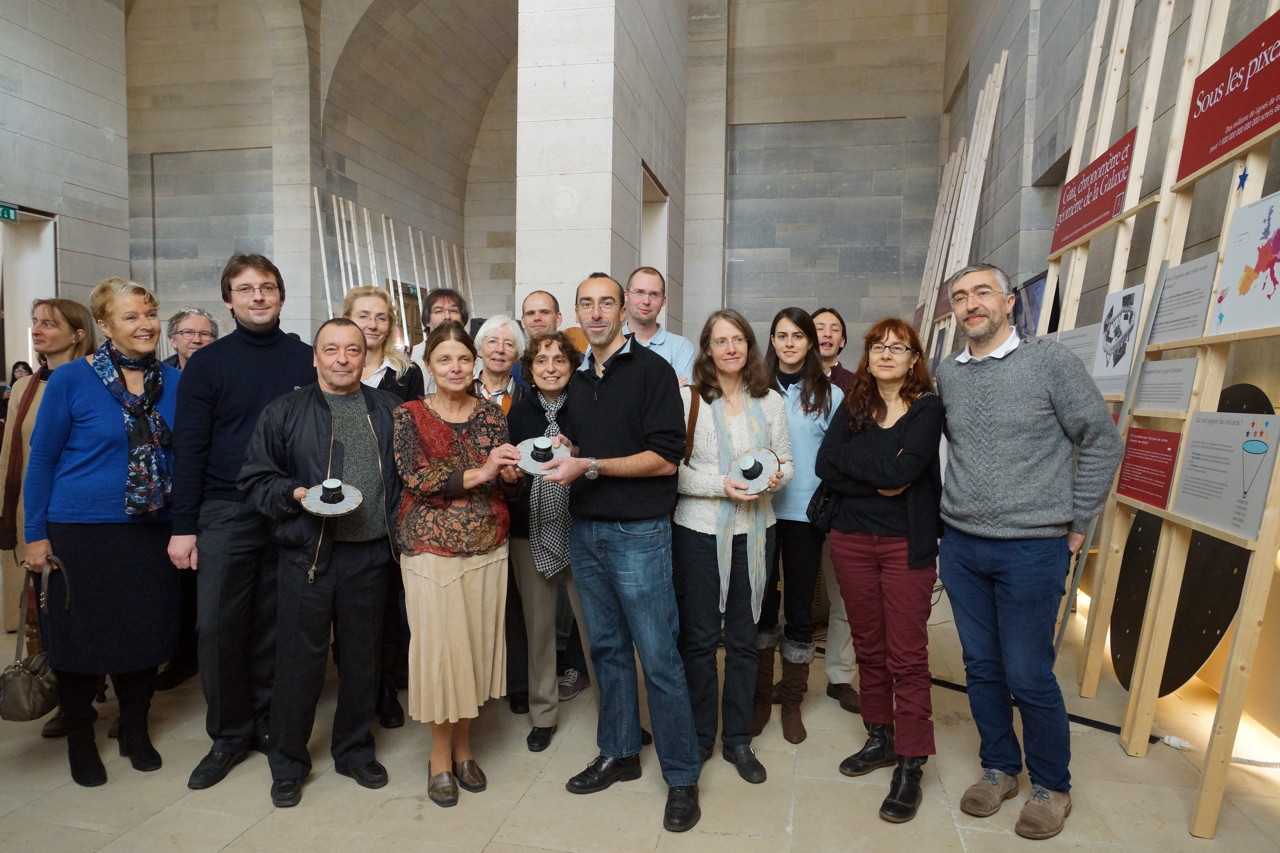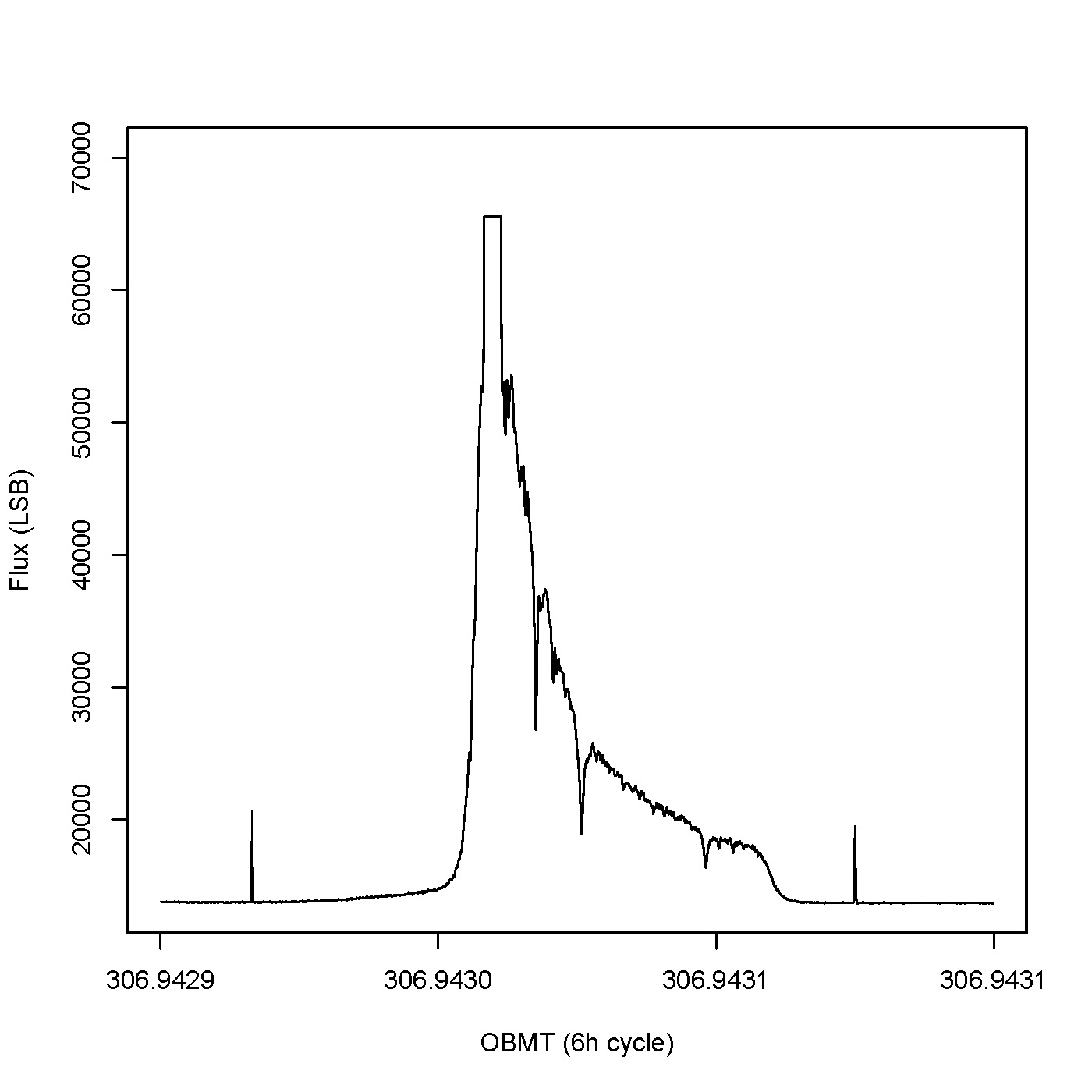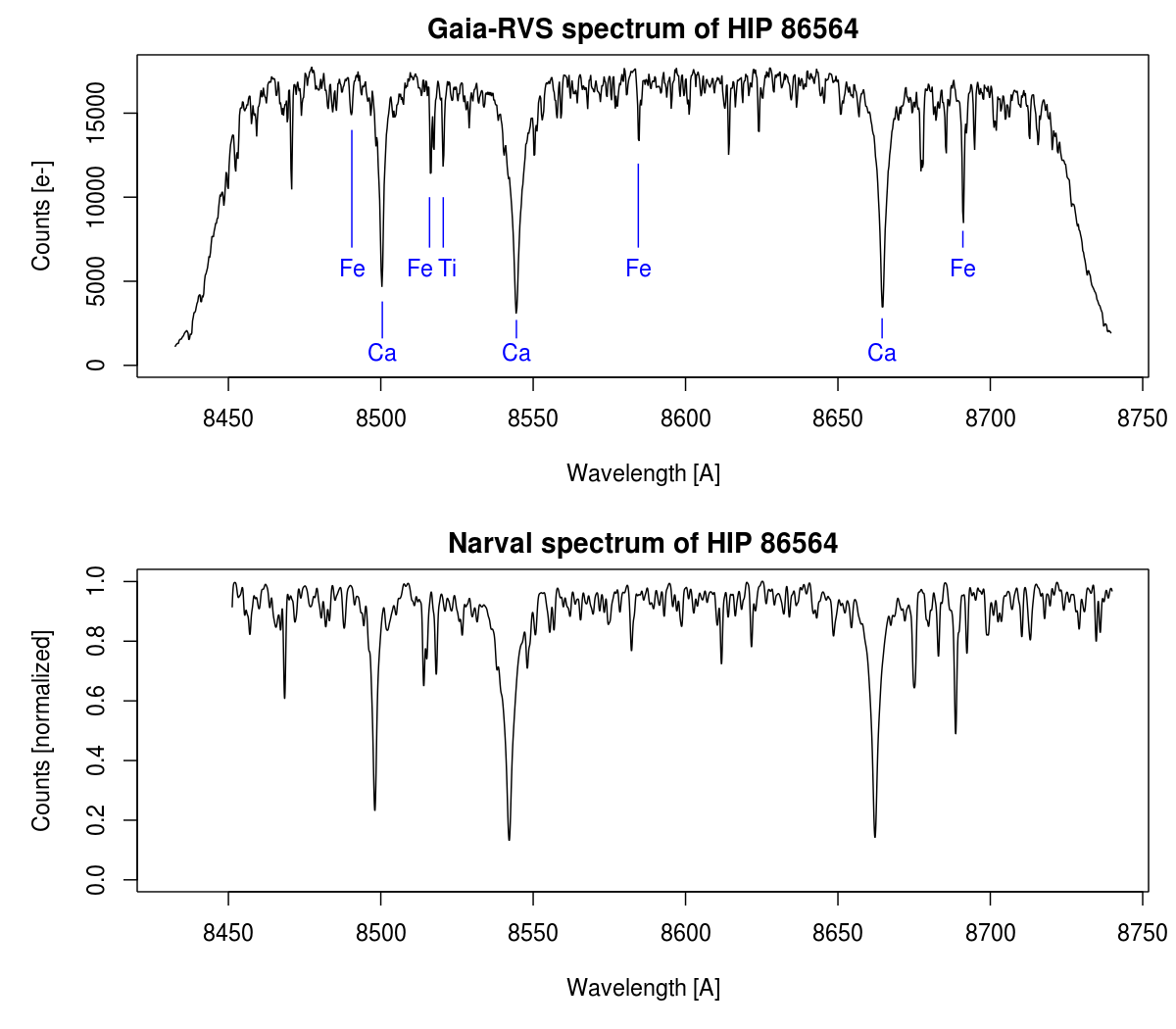news_20141219b - Gaia
"Gaia is Talking to Us!" |
|
| By Frédéric Arenou and the Observatoire de Paris-Meudon Gaia team | |
 |
|
|
Everything began with the promise to be able to see the Gaia launch from a very special place. We managed to arrange it in such a way that members of the team could either go to ESOC-Darmstadt, CNES-Toulouse or to Kourou itself. Some of us had worked on the scientific preparation of the mission for more than 15 years, so we were eager to celebrate where the action was taking place.
In retrospect, buying non-refundable airline tickets to Kourou was perhaps slightly optimistic: that the launch got delayed by one month was not unexpected, but how could we have imagined that it would be advanced by one day at the last moment? Faced with this new situation, we deemed it preferable to forget about travelling to Kourou (we did get a refund later on) and to concentrate on the organisation of the exhibition and the launch broadcast that we had prepared at Paris Observatory. The perfect launch of the spacecraft, a few days before christmas, was the best present we could have been given. This feeling was shared by the officials and colleagues that we had invited to the launch ceremony. Especially those amongst us who had participated in the adventure of Hipparcos, Gaia's precursor, knew that the success of a launch is never guaranteed. The feeling of joy and relief after the successful take-off and sunshield deployment was palpable. What we had not anticipated were the numerous press interviews that were requested, which gave us our short-lived "15 minutes of fame". As interviews rarely lasted for more than a few minutes, becoming really famous will undoubtedly have to wait till the next launch of an astrometric satellite (in two decades from now?). We received our first Gaia data in early January 2014, about three weeks after the launch. This was not yet scientific information (which arrived a few days later), but information on the detectors, called "pre-scan samples measurements". This is fairly basic information, but after having prepared the mission for 15 years, the very first data made us very excited and extremely happy. Gaia was talking to us! The first stellar spectra came very soon after. In mid-January a specific calibration operation took place, with the "poetic" name "PLM_COM_010". It was continuously measuring and transmitting strips of pixels from the detectors in order to measure the (very low) illumination produced by the lasers on-board Gaia. As a by-product of this calibration task, the stars, which by chance were falling on these strips of pixels, were also recorded and transmitted to the ground. This is how we received our first Gaia spectra. |
|
 |
 |
|
Figure 1: One of the first Gaia "primordial" spectra |
Figure 2: A spectrum after the main stages of commissioning |
| In the weeks following the acquisition of these very first spectra, many Gaia parameters were fine-tuned and optimized. To cite a few: attitude of the satellite, parameters of the on-board software, focus of the telescopes and many others. The commissioning brought the spectrograph to its nominal performance as illustrated in Figure 2. | |
|
Image credits Group photo: Observatoire de Paris, Nicolas Leclerc, Jila Varoquier The photo shows (from left to right): Carine Babusiaux, Brigitte Rocca (IAP), William Thuillot, Christophe Leponcin-Lafitte, Yves Viala, Paola Sartoretti, Alain Gueguen, Catherine Turon, Françoise Crifo, Nicolas Leclerc, Ana Gómez, David Katz, Olivier Marchal, Annie Robin (Besançon), Laura Ruiz-Dern, Shan Mignot, Yveline Lebreton and Frédéric Arenou. Figure 1: ESA/Gaia/DPAC/Airbus DS, David Katz, Olivier Marchal Figure 2: ESA/Gaia/DPAC/Airbus DS, David Katz, Olivier Marchal, Caroline Soubiran |
|

